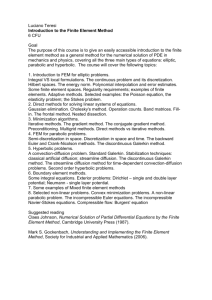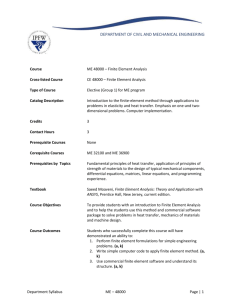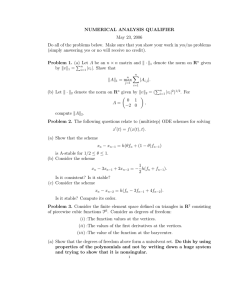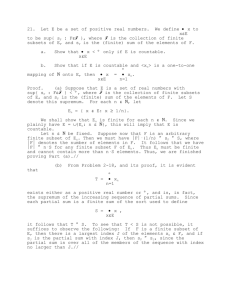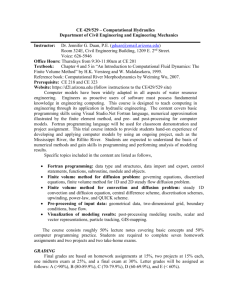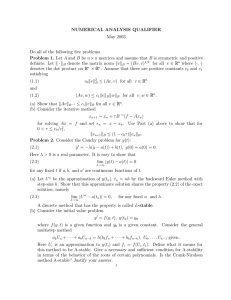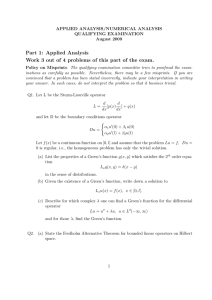What is a Finite Element Method - Department of Mechanical and
advertisement
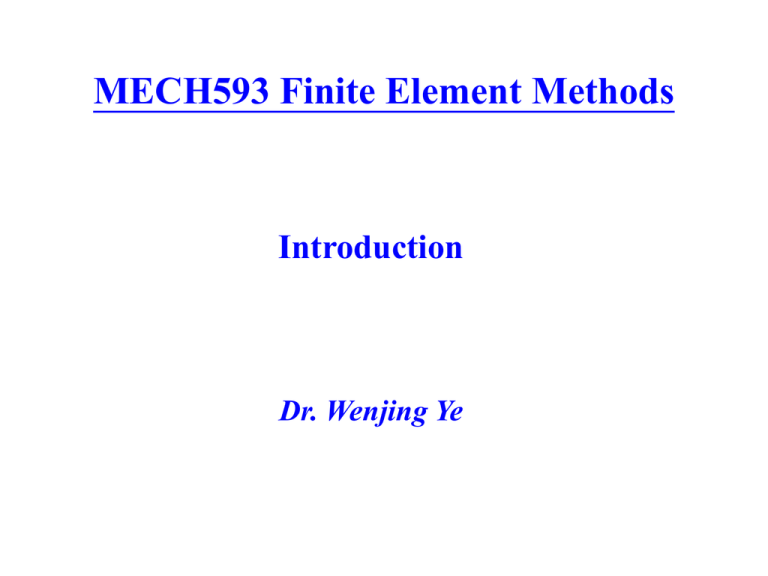
MECH593 Finite Element Methods Introduction Dr. Wenjing Ye Introduction Problem solving procedure: • Identify problem • Generate models • Solve equations • Interpret results Numerical methods - methods that seek quantitative approximations to the solutions of mathematical problems - finite element method, boundary element method finite difference method, finite volume method, etc. What is the Finite Element Method– An Example Example 1: Deformation of a bar with a non-uniform circular cross section subject a force P. (Weight of the bar is negligible). L P R k1 u2 u1 0 k1 u2 u1 k2 u3 u2 0 k2 u3 u2 k3 u4 u3 0 k3 u4 u3 k4 u5 u4 0 k4 u5 u4 P 0 k1 k1 k k k 1 1 2 0 k2 0 0 0 0 0 0 0 0 0 k2 0 0 k 2 k3 k3 k3 k3 k 4 0 k4 0 k4 k 4 k5 0 0 k5 0 u1 R 0 u2 0 0 u3 0 0 u4 0 k5 u5 0 k5 u6 P Ku P R What is a Finite Element Method • View the problem domain as a collection of subdomains (elements) • Solve the problem at each subdomain • Assemble elements to find the global solution • Solution is guaranteed to converge to the correct solution if proper theory, element formulation and solution procedure are followed. History of Finite Element Methods • 1941 – Hrenikoff proposed framework method • 1943 – Courant used principle of stationary potential energy and piecewise function approximation • 1953 – Stiffness equations were written and solved using digital computers. • 1960 – Clough made up the name “finite element method” • 1970s – FEA carried on “mainframe” computers • 1980s – FEM code run on PCs • 2000s – Parallel implementation of FEM (large-scale analysis, virtual design) Courant Clough Applications of Finite Element Methods Structural & Stress Analysis Thermal Analysis Dynamic Analysis Acoustic Analysis Electro-Magnetic Analysis Manufacturing Processes Fluid Dynamics Financial Analysis Applications: Aerospace Engineering (AE) 7 Applications: Civil Engineering (CE) 8 Applications: Electrical Engineering (EE) 9 Applications: Biomedical Engineering (BE) 10 The Future – Virtual Engineering 11 Review of Basic Statics and Mechanics of Materials • Static equilibrium conditions/free-body diagram • Stress, strain and deformation • Constitutive law – Hooke’s law • Analysis of axially loaded bar, truss, beam and frame • 2-D elasticity Review of Matrix Algebra • Matrix operation: addition, subtraction, multiplication • Basic definitions and properties of matrix • Inverse of matrix and solution of linear equations • etc




